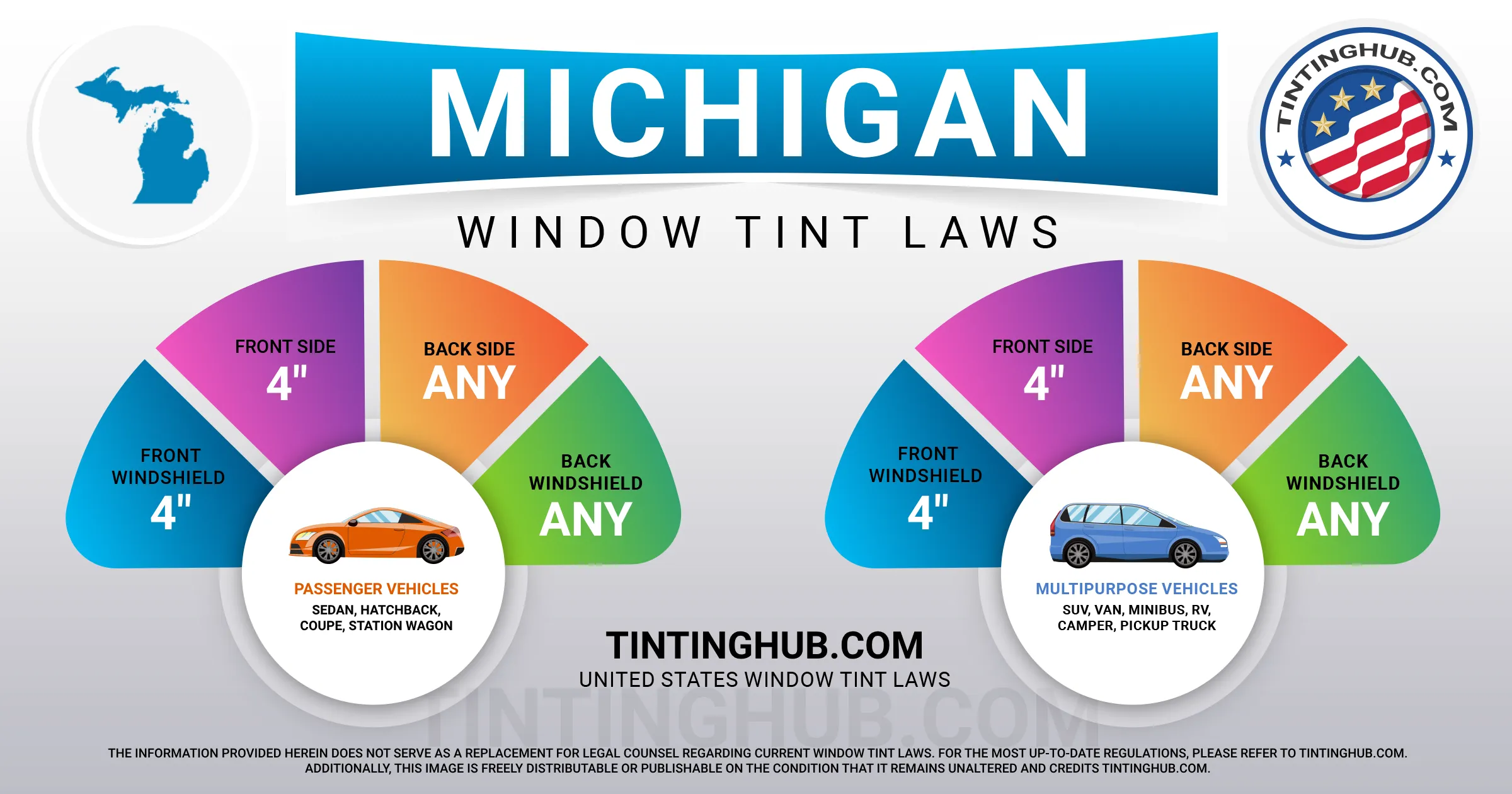Michigan Window Tint Laws (Last Update 2024)

When it comes to car window tinting in Michigan, understanding the rules and regulations is crucial to stay on the right side of the law. These guidelines, enacted in 2000, specify the darkness and reflectivity limits for window tints. In this article, we’ll provide you with comprehensive information about Michigan’s car window tinting laws, ensuring your vehicle’s tints comply with the state’s regulations.

Window Tint Darkness in Michigan
In Michigan, window tint darkness is determined by VLT, which stands for Visible Light Transmission. It’s essential to know the specific limits for different types of vehicles, such as sedans and SUVs, when it comes to VLT percentages.
Tint Darkness for Sedans
- Windshield: Non-reflective tint is allowed on the top 4 inches of the windshield.
- Front Side Windows: Any darkness can be applied, but only on the top 4 inches.
- Back Side Windows: Any darkness can be used.
- Rear Window: Any darkness can be used.
Tint Darkness for SUVs and Vans
- Windshield: Non-reflective tint is allowed on the top 4 inches of the windshield.
- Front Side Windows: Any darkness can be applied, but only on the top 4 inches.
- Back Side Windows: Any darkness can be used.
- Rear Window: Any darkness can be used.
Michigan law permits tinting only the front windshield and front windows adjacent to the driver, with a restriction on the top 4 inches. Tinting is not allowed on any other part of these windows.
Window Tint Reflection in Michigan
Window tinting can serve the purpose of reducing glare and heat by reflecting incoming light. Michigan’s regulations also dictate the allowable level of reflection for tinted windows.
Tint Reflection for Sedans
- Front Side Windows: Must not be more than 35% reflective.
- Back Side Windows: Must not be more than 35% reflective.
Tint Reflection for SUVs and Vans
- Front Side Windows: Must not be more than 35% reflective.
- Back Side Windows: Must not be more than 35% reflective.
Other Michigan Window Tint Rules and Regulations
Apart from darkness and reflection, Michigan has additional laws and regulations that you should be aware of:
- Side Mirrors: If the rear windshield is obstructed, your vehicle must have side mirrors.
- Restricted Colors: Silver and gold tint colors are explicitly prohibited in Michigan.
- Certificates: Manufacturers of film do not need to certify the film they sell in the state.
- Stickers: There is no requirement for a sticker to identify legal tinting.
- Medical Exceptions: Michigan allows medical exemptions for special tint. To learn more about the specific terms of this exemption, consult Michigan state law.
It’s worth noting that the interpretation of Michigan’s tinting laws and regulations may vary in different counties or places of residence. For the most accurate and up-to-date information, we recommend double-checking with your local DMV or law enforcement authorities.
Please be aware that our information regarding window tint laws in Michigan was last updated in 2023. If you find any information that is not up to date or correct, please do not hesitate to contact us so that we can make the necessary corrections. We take pride in being a trusted industry leader in providing accurate window tint laws.